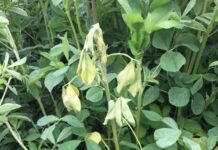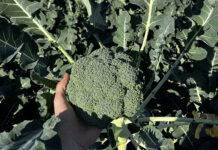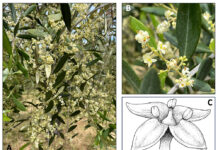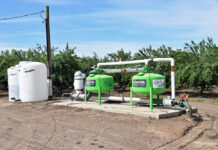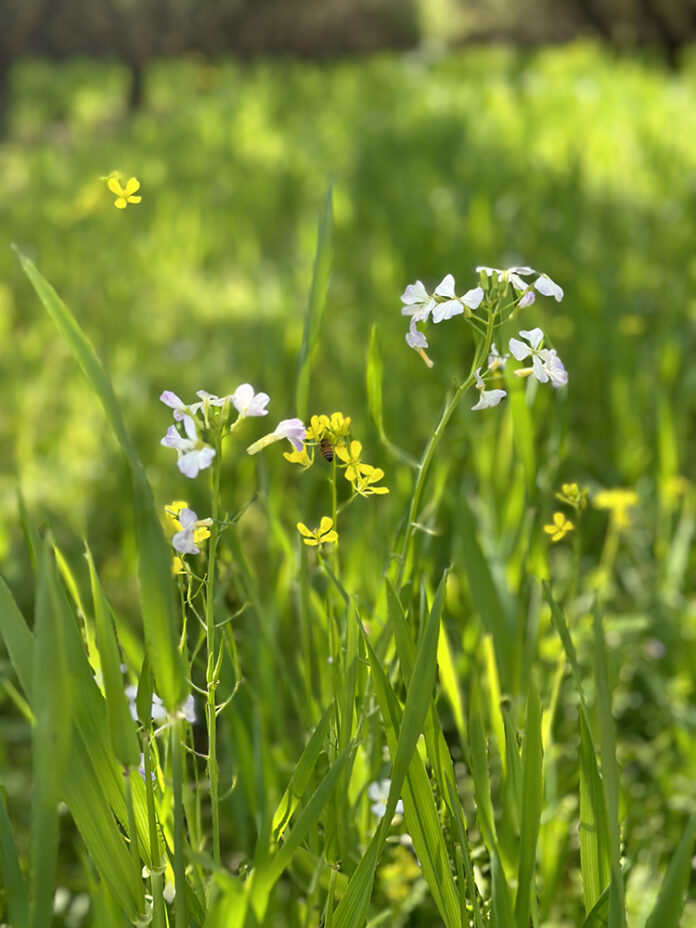
According to the Sustainable Agriculture Research and Education (SARE), “a cover crop is a plant that is used primarily to slow erosion, improve soil health, enhance water availability, smother weeds, help control pests and diseases, increase biodiversity and bring a host of other benefits to your farm.”
Why Use Cover Crops?
The first answer I give: Nature fights against bare ground. Andre Lu wrote, “Bare ground is the best way to encourage weeds as most weeds are pioneer species. They rapidly germinate to cover disturbed and bare ground. Nature always regenerates disturbed soil by rapidly covering it with plants. Weeds are nature’s way of healing disturbed soil. Living plants feed the soil microbiome with the molecules of life so they can regenerate healthy soil.”
The way nature regenerates bare ground is through a process called plant succession, which is the change in the species structure of an ecological community over time. A great example of this is the area around Mt. Saint Helens the past 43 years since its eruption. A plant community gradually or rapidly replacing another can result from developmental changes in the ecosystem itself or from disturbances such as wind, fire, volcanic activity, insects and disease, or harvest. Different plants require different ratios of fungi and bacteria based on their successional growth traits. Cover crops are a way to dramatically speed up this process on the farm.
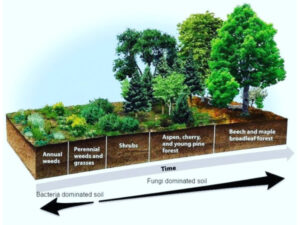
In my opinion, the more species you have in your cover crop from different plant families, the better it performs. The regenerative agriculture department at CSU Chico wrote: “Dr. Christine Jones lays out a strong case for the importance of nurturing the biodiversity in the soil using multispecies cover crops. The most diverse mix produces the best results both for the soil microbiome and for the productivity and resiliency of crops grown together in that soil.”
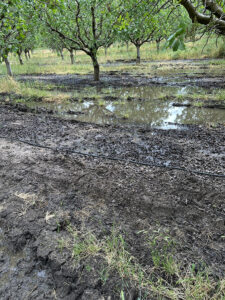
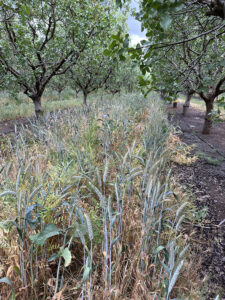
I’ve had the benefit of meeting Dr. Jones twice in person and sat through her lectures on how cover crops can signal something called “Quorum Sensing,” which is when a very diverse mix of plant species enable the soil microbiome to become more active, which then exponentially speeds up soil health processes. According to Dr. Jones, multispecies mixes that induce Quorum Sensing need to include species from different functional plant groups (grasses, brassicas, legumes and broadleaves).
Measurable Outcomes
The first thing we saw was dramatically larger and more diverse microbial communities using a variety of soil biology tests, including Direct Microscopy, MicrobiometerTM, and BiomeMakers DNA testing. We also saw physically improved soil structure and water infiltration rather quickly. Often, our growers report seeing more earthworms and a diversity of arthropods in the soil.
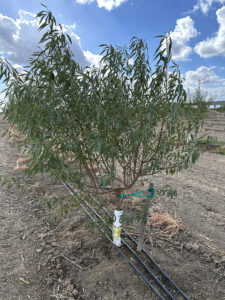
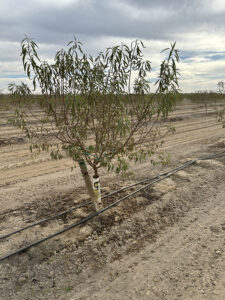
In a Wasco, Calif. almond trial, samples collected June 2023 showed an orchard farmed regeneratively the past three years had 5.5x more fungi, 1.7x more bacteria, a 3.3x higher fungi-to-bacteria ratio, 3x more biologically active carbon, 2x more biologically active nitrogen, and a 1.5x higher carbon-to-nitrogen ratio than the conventional almond orchard. In addition, the regenerative orchard used to be full of several diseases, is over 22 years old, yielded 1800 to 2200 lbs. per acre the previous five years and was ready for the bulldozer, but last year and this year yielded 3600 and 3000 lbs. per acre, respectively, vs the conventional orchard which averaged 2700 and 2300 lbs. per acre. Both orchards were in the same soil series, and both were Nonpareil/Monterey on Hansen hybrid rootstock, and the conventional orchard is nine years old. The regenerative orchard used cover crops, biologicals made by Earthfort and 60% less conventional N compared to the conventional orchard which had no cover crop, no biologicals, a full NPK program per UC Davis guidelines and bare orchard floors using herbicides.
In 2021, Fenster et al. published a study titled, “Regenerative Almond Production Systems Improve Soil Health, Biodiversity and Profit” in Frontiers in Sustainable Food Systems. The study included another orchard we work with in the Wasco area. One of the more interesting findings was the water infiltration rate of regenerative orchards in California versus conventional orchards (each conventional orchard was adjacent to each regenerative orchard to control for soil type variances.) The conventional orchards averaged 0.04 ml water infiltration per second, whereas the regenerative orchards averaged 0.8 ml/s, and the orchard in Wasco we work with averaged 1 ml/s. We believe the combination of having a 16-species diverse cover crop mix, keeping it alive until June and using fungal-dominant biologicals were the reasons why this orchard (which used to have sealed ground prior to becoming regenerative) had superior water infiltration.
As mentioned before, we see improved disease suppression when using cover crops, primarily due to improved water infiltration, but we also see a dramatic increase in microbial diversity including microbes that are predatory against bacterial and fungal soil pathogens.
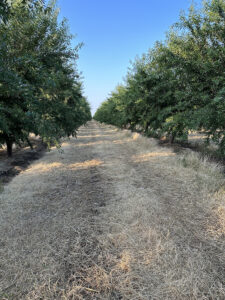
Plant-parasitic nematode suppression is one of the more impressive benefits we have seen. In past research, wild mustard reduced a wide range of parasitic nematodes, velvetbean reduced root-knot nematodes, and hairy indigo and joint vetch with mulched cowpea maintained low populations of B. longicaudatus and M. incognita nematodes. In a grower trial we did in Paso Robles, Calif. in wine grapes, a combination of cover crops and Earthfort biologicals were used to try and improve vineyard health and productivity. In 2021, there were 2.8 times more plant parasitic nematodes than beneficial nematodes. After three years on our regenerative program, there were 85.5x more beneficial nematodes than plant-parasitic nematodes. This was a 196% increase in beneficial nematode species and a 98.7% decrease in parasitic species.
One of the most popular reasons almond growers in California have been using cover crops is to have a food source for bees. This is important, but typically in the southern end of the Central Valley there aren’t many (or any) flowers open at the time of almond bloom due to the lateness of the planting after orchard operations or the lateness of winter rains. Then, many growers mow it all down in March either from fear of frost damage or fear that if they let the cover grow too large it will interfere with harvest operations. In contrast, we have found our best benefits come from late termination as this allows for more beneficial insects to assist with mite control, and it also helps with improved water infiltration because the roots were allowed to go much deeper.
This brings us to the most frequently stated benefit we hear: improved water infiltration. This past spring when much of the Central Valley was flooded, orchards with cover crops were able to resume orchard activities sooner than those without. Cover crops have been widely shown to reduce erosion and runoff, and in many cases we find water penetration is improved so much that gypsum is no longer needed.
After mowing in late spring or early summer, cover crop residue acts as an armor to protect against water evaporation and can keep soil microbes alive during hot summer months. Some growers and irrigation GSAs are fearful that cover crops increase water use, but recent studies by UC Davis point to no net increase of water inputs and in some cases measurable decreases in water use.
Cover crops might assist in the breakdown of wood chips in whole orchard recycling (WOR). A Kern County almond grower who did WOR in November 2022 and planted trees in January 2023 seeded a cover crop immediately after. Initially, the trees were significantly stunted from a lack of N tied up by the excess C (wood). The cover crop grew incredibly well due to the heavy spring rains. The trees were fed monthly with amino N and a microbial package from Earthfort, and the cover crop was disc-incorporated in July 2023. By the end of September, the trees outgrew the neighbor’s trees that were from the same nursery and rootstock and planted two months earlier in fumigated ground, kept bare with herbicides and fertilized with UN32. Our trees didn’t have long whippy growth either; they had thicker caliper trunks and more lateral branches than the neighbor’s. Further work needs to be done in this area to determine how cover crops and biologicals can best be used in WOR plantings.
In the final analysis, with water and weather issues continuing to be problematic, cover cropping in California is proving to be a practice that growers can’t afford not to do.
References
Lu, Andre; Growing Life: Regenerating Farming and Ranching. ACRES USA, 2021.
Frontiers in Sustainable Food Systems, Volume 5, Article 664359, August 2021.
Bending and Lincoln 1999
Rodriguez-Kabana et al. 1992
Rhoades and Forbes 1986
Resources
https://www.csuchico.edu/regenerativeagriculture/ra101-section/cover-crop-biomass.shtml
https://www.plantsciences.ucdavis.edu/news/Mitchell-Gaudin-cover-crops-video
https://www.csuchico.edu/regenerativeagriculture/blog/water-use-and-cover-crops.shtml



